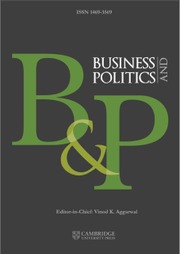Article contents
Perceived corruption, economic freedom, and firms in India
Published online by Cambridge University Press: 25 October 2024
Abstract
Research has shown that the relationship between economic freedom and corruption is rather complex. While some studies suggest a negative relationship, others show the matter to be more nuanced. While more regulations are known to foster corrupt institutions, a competitive market can also incentivize bribery and corruption. Our study examines the role of economic freedom as it relates to perceived corruption, measured via a survey for India. Using firm-level data, we explore the relationship between perceived corruption in the formal sector and economic freedom across Indian states. In our baseline results for Indian firms, we find a significantly negative relationship between perceived corruption and lagged economic freedom. These results hold when we design matching models and include a number of potentially confounding factors to control for identification issues. Additionally, we show that small and young firms and those with sole ownership perceive greater benefits from higher economic freedom. In contrast, older firms perceive higher corruption when economic freedom is higher. This lends support to the idea that competition facilitated by economic freedom can increase rent seeking behavior. Our study contributes to the literature by emphasizing that the relationship between economic freedom and corruption in India is layered, with firm characteristics playing a crucial role.
- Type
- Research Article
- Information
- Copyright
- © The Author(s), 2024. Published by Cambridge University Press on behalf of Vinod K. Aggarwal
References
- 1
- Cited by


